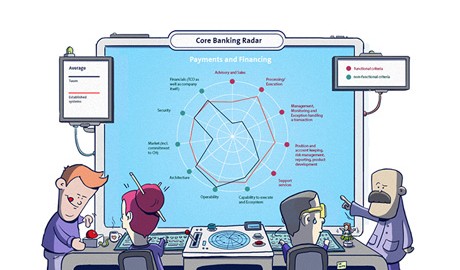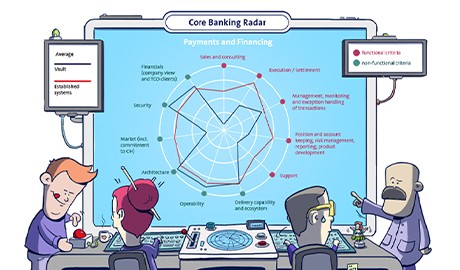Stefano Ferrazzini, e.foresight
«Distributed ledger technology (DLT) is already used in many areas»
In an interview, Stefano Ferrazzini, an expert on blockchain issues from e.foresight, explains the different forms of these new technologies and the benefits they offer banks.
Text: Stefano Ferrazzini, Matthias Niklowitz, Image: Swisscom, Unsplash,
Blockchain, DLT, Bitcoin, DeFi – what exactly are they and how do they fit together?
Stefano Ferrazzini: Blockchain is a database in which monetary units, financial assets (equities, bonds, derivatives, loans), ownership rights (car register, land register entries) and property rights (real estate) are stored and managed in a decentralised manner. It is often also referred to as distributed ledger technology.
Starting from the decentralised cryptocurrency Bitcoin, a whole new industry has emerged in recent years. This industry is continuing to develop rapidly and now offers new, decentralised financial services, for instance for loan provision, stock market trading, payments or insurance services, based on a concept known as a smart contract. This developing financial area is referred to as decentralised finance (DeFi).
Why are these issues important for banks?
Stefano Ferrazzini: In addition to the risk of disruption by new market participants, leading to the migration of customers and the transfer of returns, new opportunities are arising for banks. For example, the technology can be used within banks or between banks for new trading systems or in the area of mobile payment. In addition, the development of customer demand should be closely monitored in order, for instance, to provide customers with access to these new asset classes and services where necessary.

Stefano Ferrazzini, Digital Banking Trend Analyst & Consultant in FinTech, e.foresight
What does this mean for the future business models of banks?
Stefano Ferrazzini: Depending on the extent to which developments and customer demand continue, banks will expand their business models. This may include the introduction of custody and trading for customers, right through to the integration of full DeFi services. Studies such as the survey by e.foresight on the topic “Assessment of the Swiss population in relation to cryptocurrencies” reveal the current level of interest among the Swiss population and are essential for understanding developments and being able to better estimate the extent of business model disruption.
Where can initial signs of this development already be seen today?
Stefano Ferrazzini: DLT is already used in lots of areas. For instance, in tokenised marketplaces, as have also been created and put into operation in Switzerland, in new payment methods and in new central bank digital currency (CBDC). The Swiss digital asset ecosystem is one of the most advanced in the world and includes many different participants with a wide range of business models and backgrounds.
How should banks react now and what action should be taken?
Stefano Ferrazzini: Banks need to decide what strategic position they wish to take up with respect to this topic and how they want to be perceived on the market in future. The close monitoring of developments and the assessment of new trends, for instance in the case of non-fungible tokens (NFTs) or tokenised assets, must be understood to enable decisions to be made about possible use. Interaction with the ecosystem, and the active shaping and understanding of it, is essential for the future of the Swiss financial centre. It is a very laborious and, in some cases, complex process to establish a good overview for oneself in this area.
More on the topic:




